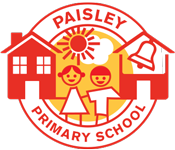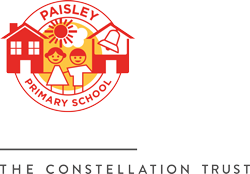

Maths – curriculum information
Intent
We offer the children a progressive mathematics curriculum based on the National Curriculum to develop mathematical knowledge and skills for our children. They will be positive and enthusiastic towards mathematics, with an awareness of the diversity of the subject.
- They will be competent and confident in taking risks to apply mathematical knowledge, concepts and skills.
- They will be able to solve problems, reason mathematically and think logically and systematically.
- They will be able to work independently and in cooperation with others.
- They will be able to use and apply mathematics across the curriculum, and to understand the application of mathematics in real life contexts and scenarios.
All children have equal access to the mathematics curriculum, regardless of race or gender. Children access the curriculum at the level appropriate to them, ensuring rapid measurable progress. Resources and learning environments are planned and designed to enable all children to access to the learning required. Differentiated activities are provided to support less able learners and challenge rapid graspers so they are able to work at greater depth in mathematics. The mathematics curriculum is ambitious for pupils with SEND to ensure they can access the subject at an appropriate level and make progress towards clearly defined end points.
Mathematical knowledge can be linked to engaging topics but will be gained by the teaching of year group progressive skills which build on previous learning, ensuring pupils’ learning becomes embedded. In addition to this, pupils will engage in enrichment activities to support their learning of mathematics for a real purpose through cross-curricular lessons.
End points:
By the end of EYFS children will:
- Be able to count confidently, develop a deep understanding of the numbers to 10, the relationships between them and the patterns within those numbers.
- Develop a secure base of knowledge and vocabulary from which mastery of mathematics is built.
- Develop their spatial reasoning skills across all areas of mathematics including shape, space and measures.
By the end of Key Stage 1 children will:
- Develop confidence and mental fluency with whole numbers, counting and place value. This should involve working with numerals, words and the four operations, including with practical resources [for example, concrete objects and measuring tools].
- Develop their ability to recognise, describe, draw, compare and sort different shapes and use the related vocabulary.
- Be able to use a range of measures to describe and compare different quantities such as length, mass, capacity/volume, time and money.
- Know the number bonds to 20 fluently and be precise in using and understanding place value.
- Read and spell mathematical vocabulary at a level consistent with their increasing word reading and spelling knowledge at key stage 1.
By the end of Lower Key Stage 2 children will:
- Become increasingly fluent with whole numbers and the four operations, including number facts and the concept of place value.
- Develop efficient written and mental methods and perform calculations accurately with increasingly large whole numbers.
- Develop their ability to solve a range of problems, including with simple fractions and decimal place value.
- Be able to draw with increasing accuracy and develop mathematical reasoning so they can analyse shapes and their properties, and confidently describe the relationships between them.
- Use measuring instruments with accuracy and make connections between measure and number.
- Memorise their multiplication tables up to and including the 12 multiplication table and show precision and fluency in their work.
- Read and spell mathematical vocabulary correctly and confidently, using their growing word reading knowledge and their knowledge of spelling.
By the end of Upper Key Stage 2 children will:
- Extend their understanding of the number system and place value to include larger integers. This should develop the connections that pupils make between multiplication and division with fractions, decimals, percentages and ratio.
- Develop their ability to solve a wider range of problems, including increasingly complex properties of numbers and arithmetic, and problems demanding efficient written and mental methods of calculation.
- Be introduced to the language of algebra as a means for solving a variety of problems.
- Develop their understanding of geometry and measures to consolidate and extend knowledge developed in number.
- Classify shapes with increasingly complex geometric properties and learn the vocabulary they need to describe them.
- Be fluent in written methods for all four operations, including long multiplication and division, and in working with fractions, decimals and percentages.
- Read, spell and pronounce mathematical vocabulary correctly.
Implementation
Paisley Primary School uses planning documents which have been adapted by the mathematics leaders throughout the Constellation Trust, from The White Rose Maths Hub scheme. These Constellation Trust planning documents ensure key concepts are taught progressively as pupils move through the school and that units are sequenced throughout the year to build knowledge and skills.
Progressive knowledge such as number bonds, times tables and the four operations are used to underpin pupils’ understanding of place value and number within year groups. Lesson objectives are structured and sequenced so that final outcomes are secure and meaningful. Children do not learn objectives in isolation but continue to embed these through carefully planned application of their learning throughout the year.
Medium-Term Planning is documented, based on The White Rose Maths Hub materials, for each year group. It is the responsibility of the class teacher to adapt planning to suit the children’s needs. Reasoning and problem solving is a focus for the school and wherever possible children are encouraged to apply their knowledge and skills in different situations.
Short-Term Planning identifies specific learning objectives for the week.
All children have access to the Maths curriculum, as work is tailored appropriately for children with SEND. Children will learn through similar activities, with outcomes modified to suit all needs.
Impact
Work in books and regular ongoing assessment is used as a measure of progress towards the identified end points. Pupils are given regular opportunities to recap and embed learning as well as applying their knowledge to solve a range of tasks and problems. Where gaps in learning are identified, the reasons for this are analysed and this information is used to plan further teaching or intervention activities where needed.
Maths Impact This is shown in:
- Key Performance Indicator (KPIs) records
- Evidence of work in books, including evidence of applying key knowledge to solve more complex problems
- Regular low stakes assessments
- Progress records and data overviews
- Benchmarking against national tests
- Pupil voice
- Links to Staff Performance Management targets
- Subject Action and School Development Plans and SSE cycle.
Key Performance Indicators
Early Years Foundation Stage
Mathematics Early Learning Goal: Number
Children at the expected level of development will: –
- Have a deep understanding of number to 10, including the composition of each number;
- Subitise (recognise quantities without counting) up to 5;
- Automatically recall (without reference to rhymes, counting or other aids) number bonds up to 5 (including subtraction facts) and some number bonds to 10, including double facts.
ELG: Numerical Patterns
Children at the expected level of development will: –
- Verbally count beyond 20, recognising the pattern of the counting system
- Compare quantities up to 10 in different contexts, recognising when one quantity is greater than, less than or the same as the other quantity
- Explore and represent patterns within numbers up to 10, including evens and odds, double facts and how quantities can be distributed equally.
Further information
